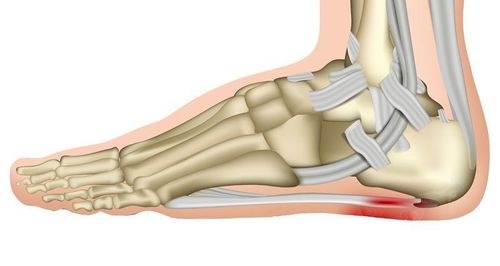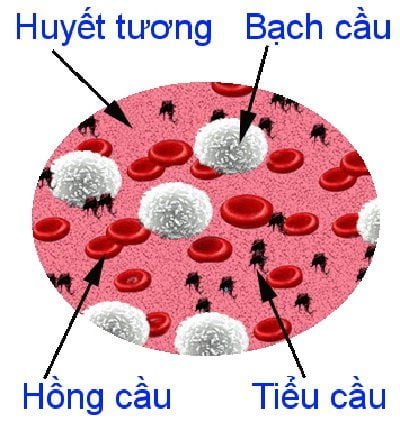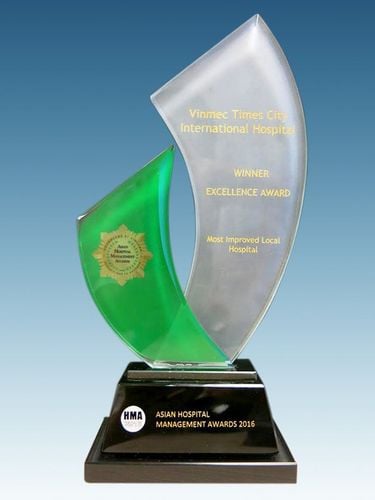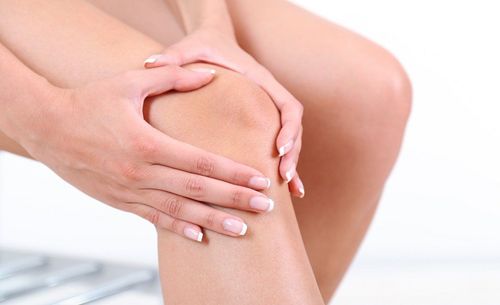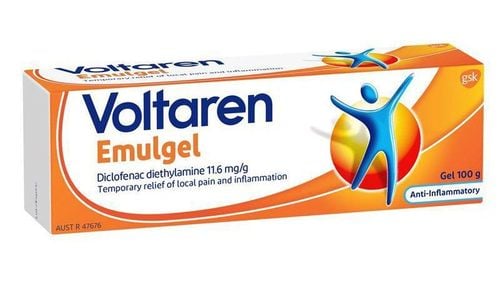This is an automatically translated article.
The article is written by Master, Doctor Tran Thi Tuyet Nhung - Department of General Internal Medicine - Vinmec Times City International HospitalOsteoarthritis is a very common bone and joint disease with its frequency increasing with age. However, many people are still very subjectively disregarding the disease. So what are the symptoms of osteoarthritis? Which treatment is most effective? Let's find out through the article below.
According to statistics of the World Health Organization, about 20% of the population suffers from degenerative joint disease. This is a very common bone and joint disease with the frequency increasing with age. In Vietnam alone, about 23.3% of people over 40 years old are sick. However, many of them are still very subjectively disregarding the disease. So what are the symptoms of osteoarthritis? Which treatment is most effective? Let's find out through the article below.
This article includes the following sections:
What is degenerative joint disease? Common symptoms? The cause to the illness? Treatment of osteoarthritis with platelet-rich plasma injection at Vinmec hospital. What is degenerative joint disease? Health and life experts of the Ministry of Health said that osteoarthritis is a condition of damage to the cartilage, the cushion between the two ends of the bones, accompanied by an inflammatory response and a decrease in the amount of mucus that helps lubricate, thereby causing pain and stiffness. The disease is mainly seen in people over 40 years old, especially after 60 years old. There are two typical types of degenerative joint diseases:- Primary osteoarthritis: for example, hip, knee, big toe, joint metatarsal and proximal joints of the thumb, cervical spine, lumbar spine... - Secondary degeneration: is the result of joint damage due to joint causes (such as rheumatoid arthritis), or outside the joint. Secondary degeneration can occur in any joint.
Common symptoms Here are the clear symptoms of degenerative joint disease.
Joint pain
This is the first and most noticeable sign of degenerative joint disease. The pain is usually dull and can become acute when the patient moves in an unfavorable position. Excessive movement also makes the patient more painful. It only hurts at first when the joint is active and goes away after resting. But then the pain may persist and become more prominent with continued movement.
The pain will become worse when the weather changes, especially in cold weather, high humidity and reduced air pressure. At that time, with just a small movement, the patient can have pain in the joint throughout the day or even days.
Stiffness
Stiffness is a symptom that accompanies the pain, especially in the morning. After waking up, the patient will find that they cannot move the painful joints. At that time, you must stop exercising for 10-30 minutes to reduce stiffness. The more severe the osteoarthritis, the more persistent the stiffness.
The sound in the joints when moving
As mentioned above, osteoarthritis is a condition of damage to the cartilage, the cushion between the two ends of the bones, accompanied by an inflammatory response and a decrease in the amount of mucus that helps lubricate. Therefore, when moving, the ends of the bones will continue to stay close to each other, contacting the worn cartilage creating a crunching sound. This symptom is most noticeable after vigorous exercise. It was accompanied by a cry of intense pain.
Difficulty moving the joints
When you have osteoarthritis, you may not be able to do some movements such as turning your neck or bending down to the ground.
Swollen joints deformed
Painful joints may become swollen or even deformed. The surrounding muscles become thin or weak. The most obvious example is the knee is off-axis, the toes are crooked, while the fingers are rough and uneven.
The above are common symptoms in degenerative joint disease. Note that these symptoms are often variable, erratic, and have no specific cause.
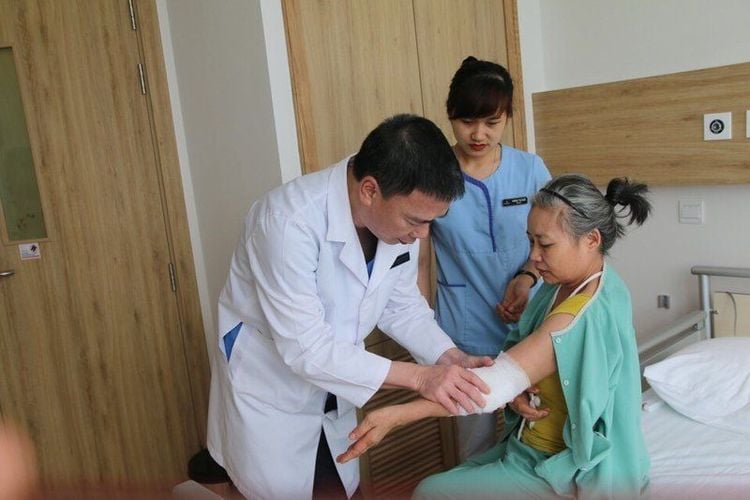
Causes of disease Osteoarthritis can occur due to the following reasons:
Natural aging process: As we mature, the cartilage cells are not able to reproduce and regenerate. As we age, the chondrocytes gradually reduce the function of synthesizing substances that create collagen fibers and mucopolysaccarides, making cartilage quality worse, especially elasticity. Congenital: Congenital malformations are also one of the causes of degenerative diseases. They change the normal compression area of the joints or spine, making some joints unable to withstand the pressure, causing degeneration for a long time. Heredity: If someone in the family suffers from early degenerative joint disease, their descendants will also easily get the disease if they do not have a suitable diet, rest, and activities. Secondary deformities: There are injuries due to other musculoskeletal diseases, injuries from accidents, occupations, changes in relationship, morphology of joints and spine... Obesity or growth Weight too fast: This will increase the pressure on the bones and joints, over time causing the bones to be compressed and deformed. Endocrine: Lack of hormones in women is one of the factors that cause osteoarthritis. Not only that, phenomena such as hormonal disorders during menopause, diabetes, endocrine-induced osteoporosis... also contribute to an increased risk of osteoarthritis. Treatment of osteoarthritis with rich plasma injections Currently, there are many methods of treating osteoarthritis such as injections, surgery. However, the method of injecting platelet-rich plasma that Vinmec hospital is applying has been proven to be the safest, quickly ending pain and having long-lasting effects.
What is platelet-rich plasma (PRP)? PRP stands for the English phrase "Platelet Rich Plasma": Platelet Rich Plasma.. In normal blood there is plasma (plasma) and blood cells are red blood cells (93%) white blood cells, (1%) ) platelets (6%). The blood after centrifugation will remove most of the red blood cells, the white blood cells will be left with platelets at a rate 2 to 7 times higher than the rate in normal blood. The broken platelets will release many elements. Nutritional and growth factors play an important role in regeneration, tissue repair, regulation of collagen production, stimulation of growth of fibroblasts and different types of fibroblast stem cells. PRP stimulates epithelial cells, matrix formation, cell division and hematopoiesis, as well as angiogenesis. From there, it regenerates damaged tissues, helping cells become healthier. For musculoskeletal injuries, PRP has anti-inflammatory effects, stops pain quickly, and increases mobility of muscles and joints.
PRP injection is indicated for bone and joint diseases? The following are diseases that are often indicated for treatment with PRP injection:
Rotator cuff disease (inflammation, tearing of the rotator cuff) Tendonitis in the elbow, wrist, and knee areas Plantar fasciitis Tendonitis or other diseases about other tendons Meniscus and ligament injuries Osteoarthritis Depending on the patient's clinical condition and individual recovery ability, the doctor will prescribe injections of PRP 2 -3 times. Compared with other treatment methods Traditional treatment is the use of drugs, in severe cases, surgery is indicated (laparoscopic or open surgery), PRP is highly appreciated for its safety because it uses blood taken from the patient's body, helping to stop the pain. rapidly to 80-90%. In addition to the gentle treatment process and reasonable cost, PRP is being applied more and more widely.
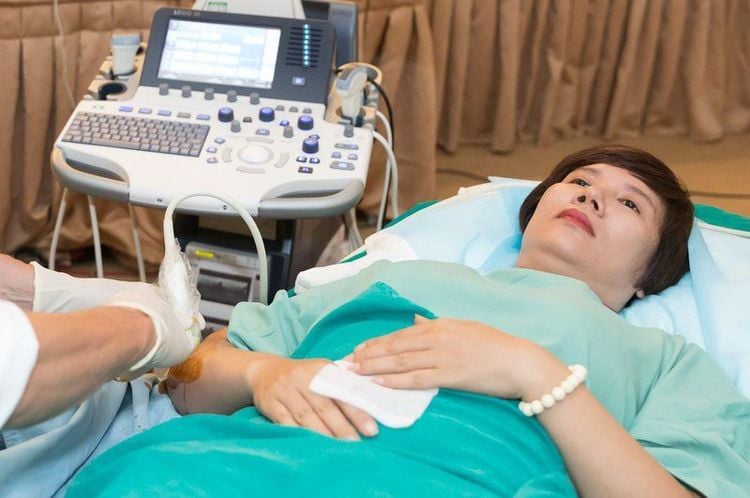
Platelet-rich plasma injection in Vinmec With a team of dedicated, experienced doctors and modern equipment, Vinmec hospital is a reliable address for patients with osteoarthritis to come for treatment with PRP method.
Precise procedure At Vinmec Times City International Hospital, after being examined, there is an indication for PRP injection, the patient will take blood and transfer PRP extraction. After 1 hour, this preparation is injected back to the patient, directly into the injured shoulder area. After the injection, the patient can go home immediately and return to the clinic after 3-4 weeks to assess the effectiveness of the treatment. In fact, the extent of long-term cure and cessation of the disease will greatly depend on the quality of the PRP preparation after extraction and the correct injection into the lesion site. Therefore, the PRP preparation process at Vinmec is carried out with close supervision in a laboratory of international standards.
Modern equipment Vinmec's modern equipment has outstanding advantages to help the PRP method achieve maximum efficiency. Vinmec has used the most modern imaging equipment today to ensure the most accurate injection positioning. Those are GE Healthcare S9 ultrasound machines with flat transducers, high frequency, HD resolution for clear images, accurate lesion detection. The 3.0 Tesla Magnetic Resonator has specialized receivers for the joint area, so it can detect small lesions, at an early stage.
Team of experienced and highly qualified doctors Talking about PRP method, Doctor Tran Thi Tuyet Nhung - musculoskeletal specialist, Vinmec Times City Hospital who directly examines and prescribes PRP treatment for patients. For more information: “Injecting PRP preparations directly affects the lesion, so determining the right injection site is very important. Therefore, patients at Vinmec will receive ultrasound and magnetic resonance imaging to accurately diagnose the pathology and extent of tendon damage and tear (if any) in the Imaging Department. The process of injecting PRP again must be coordinated by the radiologist and musculoskeletal team under the guidance of ultrasound, to ensure the highest accuracy, no infection, then the "medicine" can bring short-term effects, while maintaining long-term effects."
At Vinmec, the whole process from examination, diagnosis to PRP injection is always performed and supervised by a team of experienced and highly qualified doctors. Since the beginning of 2017, Vinmec Times City has deployed PRP injection to treat arthritis under ultrasound guidance, bringing positive changes to hundreds of patients.
For detailed advice on degenerative joint disease as well as timely treatment of this disease, please call Vinmec's hotline to book an appointment today: 024 3974 3556





